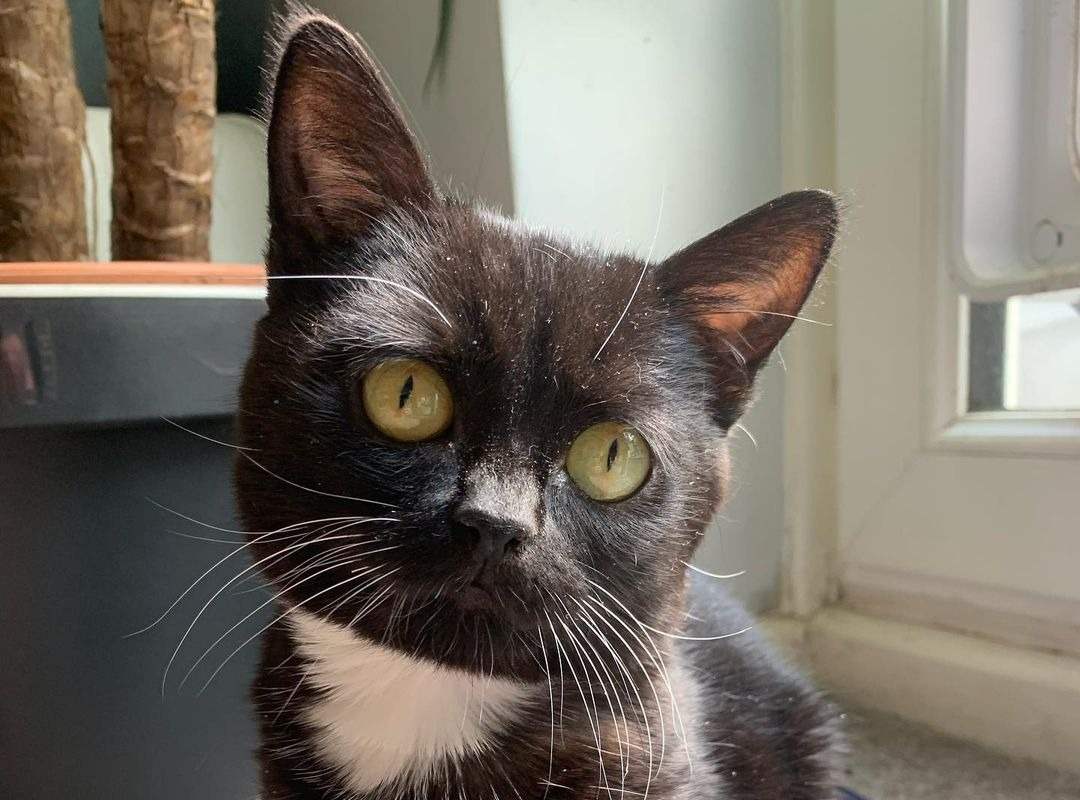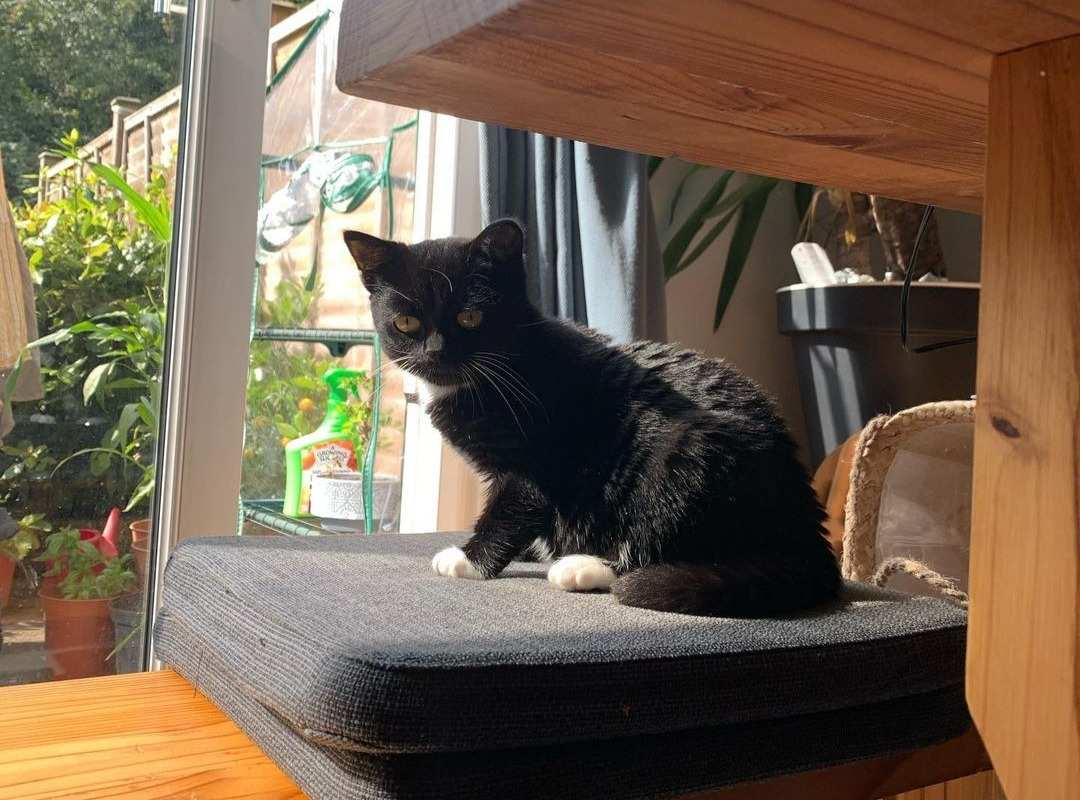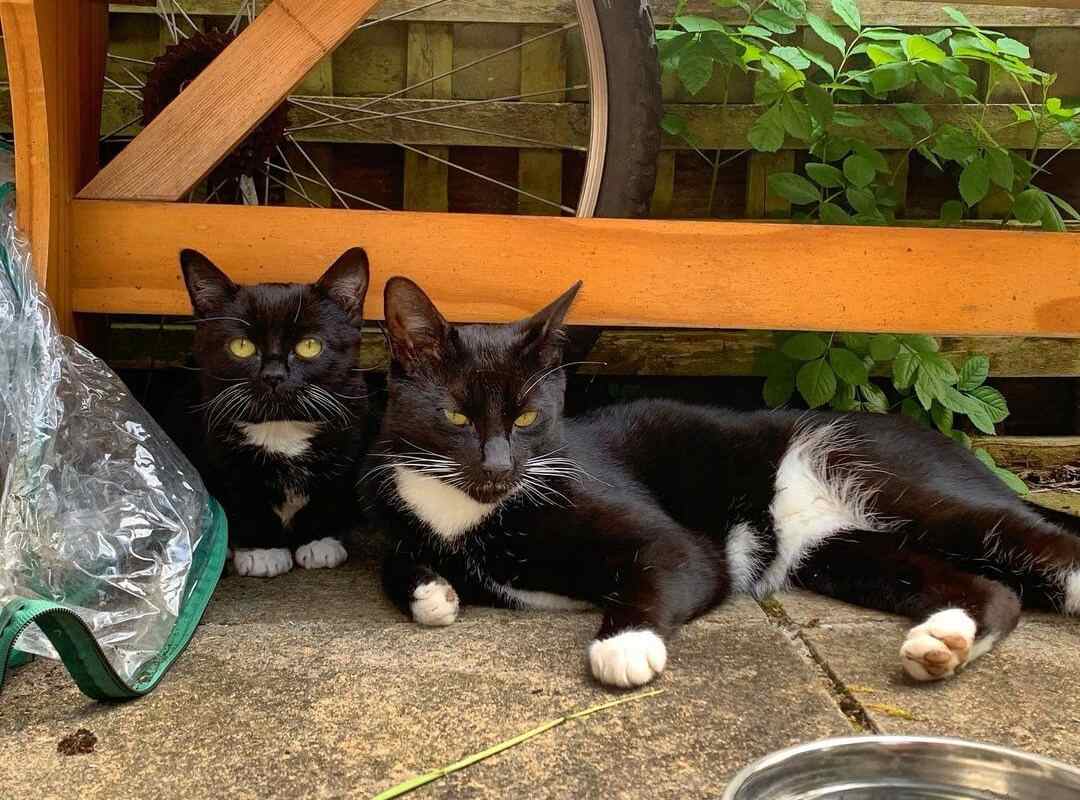
When Kate was looking for a cat to adopt, she never expected what she found at Cats Protection UK.
Fig, a kitten, was found with her littermate, Dante, and the bonded pair were looking for a home. Once she found out Fig had feline dwarfism and needed special care, she couldn’t say no. Fig is learning how to have a normal life, but not without its challenges.
Due to Feline Dwarfism, Fig Will Always Be Small

Dwarfism may contribute to cats looking “cute,” however, it can lead to a lifetime of ailments.
Dwarfism in cats, also known as Osteochondrodysplasia or achondroplasia, can be caused by a few different reasons. Pituitary dwarfism is caused by an issue with the pituitary gland located in the brain, and results in hormonal issues, which stunt the growth of the kitten.
Kittens with this condition appear normal at first, but show signs as they age, including short legs, a larger than normal head, and lethargy. Osteochondrodysplasia results in abnormal bone growth due to growth plates not closing properly. This is often visible in the form of disproportionate limb growth such as shorter legs.
Dwarfism may contribute to cats looking “cute,” however, it can lead to a lifetime of ailments. Symptoms of dwarfism in cats include, but are not limited to, poor growth, enlarged joints, and abnormal spine shape. Ongoing medication is required for pain management due to arthritis, and there is no cure. Corrective surgery is often not a viable long term solution.
Fig Is Just One-Third of Her Brother’s Size

Fig and Dante lounging outside.
After Kate showed interest in adopting Fig, Cats Protection notified her that they suspected Fig had stopped growing and would forever remain the size of a kitten. However, this didn’t stop Fig from living her best kitten life being “incredibly active and playful.”
It wasn’t until months after the adoption that x-rays revealed deformities were “a lot more intense” than originally thought. It was discovered that Fig had no kneecaps and the growth plates in her spine had not fused properly. This is likely what contributed to her small stature.
She sits at one-third of the size of her brother, Dante, but he loves her all the same. At three-and-a-half pounds, Fig still plays with all she’s got, even if she’s outmatched by a normal sized cat!
Due to Fig’s size, Kate has placed sets of stairs or ramps around the house so that she can navigate her environment successfully. These accommodations help tremendously since it is difficult for Fig to run or jump like other cats.
Fig Loves to Be Affectionate

Fig loves belly rubs from her owner, Kate.
Although Fig is small, she still has the biggest heart. “She’s very affectionate,” says Kate, and she “absolutely loves human contact.” While Fig is not big on lying in your lap, she does love to nestle up cozily to Kate’s leg to stay warm. She loves rubs on her little, round belly and will take a scratch on the stomach any time.
Fig is also described by Kate as being “obsessed with food”. Fig “cries and meows” while Kate is getting ready in the mornings, and seems to be always ready for her breakfast.
As sweet as she is, however, Kate is aware that little Fig is “not going to live a long life, which is quite hard to come to terms with,” she says. “I would never advertise for anyone to get a dwarf cat,” Kate says, based on their health issues.
Kate takes care of Fig’s health by administering multiple medications, one of which is for her arthritis. She also keeps a close eye on Fig’s weight, since she carries most of her weight disproportionately in her belly. Round bellies can cause joint pain and stress in felines.
Although it’s likely that Fig’s dwarfism is a genetic issue and not from intentional breeding, Kate has become an advocate for cats with dwarfism. She speaks out on Fig’s social media accounts about the dangers of breeding for feline dwarfism intentionally, and the health consequences that cats like Fig can face.
Fig Will Live a Happy Life

Fig has found a wonderful home and is living a happy life.
While Fig is certainly a special kitty that deserves all of the love in her life, it is important to realize certain breeds of cat are selected for this particular trait, which may contribute to a shorter lifespan or painful health issues like arthritis.
If you see descriptions such as “dwarf,” “miniature,” “teacup,” or “pocket,” be aware that a breeder may have encouraged dwarfism to obtain shorter legs.
Based on Fig’s health issues, “she’s not going to live a long life,” says Kate, “but we know she’ll live a happy life.” Kate has vowed to make Fig as comfortable as possible. I think we can all agree that with so much love and attention, Fig is certainly a lucky kitty to have found such a wonderful home.
To see all of Fig’s adventures, check her out on Instagram.



